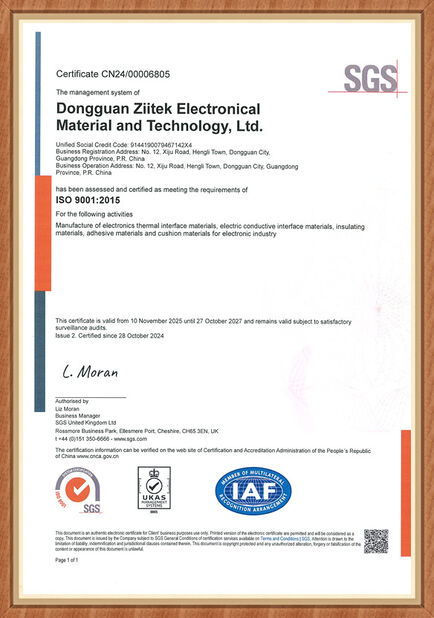Hướng dẫn Toàn diện về Silicone Dẫn nhiệt: Phân tích Chi tiết về Thành phần và Nguyên tắc Tản nhiệt
Trong hệ thống tản nhiệt của các thiết bị điện tử, mặc dù keo tản nhiệt chỉ là một ống nhỏ, nhưng nó đóng một vai trò quan trọng.
Thành phần của mỡ silicone dẫn nhiệt
Mỡ silicone dẫn nhiệt chủ yếu bao gồm dầu gốc, chất độn dẫn nhiệt và các chất phụ gia khác.
Dầu gốc: Ưu tiên dầu silicone, chẳng hạn như dầu dimethyl silicone, v.v. Dầu silicone có độ ổn định hóa học tốt, độ bay hơi thấp và độ linh động tuyệt vời. Nó cho phép mỡ silicone có đặc tính làm ướt tốt, cho phép nó bám dính tốt hơn vào bề mặt của các linh kiện điện tử và bộ tản nhiệt.

Chất độn dẫn nhiệt: Đây là yếu tố then chốt quyết định hiệu suất của mỡ silicone dẫn nhiệt. Các chất độn dẫn nhiệt phổ biến bao gồm oxit nhôm, boron nitride, bột bạc, v.v. Oxit nhôm có chi phí thấp hơn và được sử dụng rộng rãi trong máy tính thông thường, thiết bị gia dụng và các thiết bị khác có yêu cầu tản nhiệt ít khắt khe hơn. Boron nitride có độ dẫn nhiệt cao và cũng có khả năng cách điện và ổn định hóa học tốt. Bột bạc có độ dẫn nhiệt rất cao, nhưng nó đắt tiền và dễ bị oxy hóa. Nó thường chỉ được sử dụng trong các tình huống ép xung hoặc thiết bị cấp nghiên cứu đòi hỏi hiệu suất tuyệt vời.
Các chất phụ gia khác: chẳng hạn như silica và bentonite làm chất làm đặc, có thể được sử dụng để điều chỉnh độ đặc của mỡ silicone, giúp dễ dàng thoa và giữ nguyên ở một vị trí cụ thể. Ngoài ra còn có chất chống oxy hóa, có thể ngăn chặn hiệu suất của mỡ silicone bị suy giảm và kéo dài tuổi thọ của nó.
Nguyên tắc tản nhiệt của mỡ silicone dẫn nhiệt

Các linh kiện điện tử tạo ra một lượng lớn nhiệt trong quá trình hoạt động. Mặc dù bề mặt giữa chip và bộ tản nhiệt có vẻ rất mịn từ góc độ vĩ mô, nhưng dưới góc độ vi mô, có vô số các khu vực không bằng phẳng nhỏ. Những khoảng trống này chứa đầy không khí, là chất dẫn nhiệt kém và cản trở nghiêm trọng quá trình truyền nhiệt. Sau khi keo silicone dẫn nhiệt được thoa đều giữa linh kiện điện tử và bộ tản nhiệt, nó sẽ, bằng tính linh động của chính nó, thấm vào những khoảng trống nhỏ này và đẩy không khí ra, từ đó thiết lập một kênh dẫn nhiệt hiệu quả.
Ví dụ, trong quá trình tản nhiệt của CPU máy tính, keo tản nhiệt hoạt động như một cây cầu, liên tục vận chuyển nhiệt do lõi CPU tạo ra đến bộ làm mát CPU, đảm bảo hoạt động ổn định của CPU. Hơn nữa, keo tản nhiệt còn có đặc tính cách điện, có thể ngăn ngừa đoản mạch và các tình huống khác xảy ra, cung cấp thêm sự bảo vệ cho hoạt động bình thường của các thiết bị điện tử.







